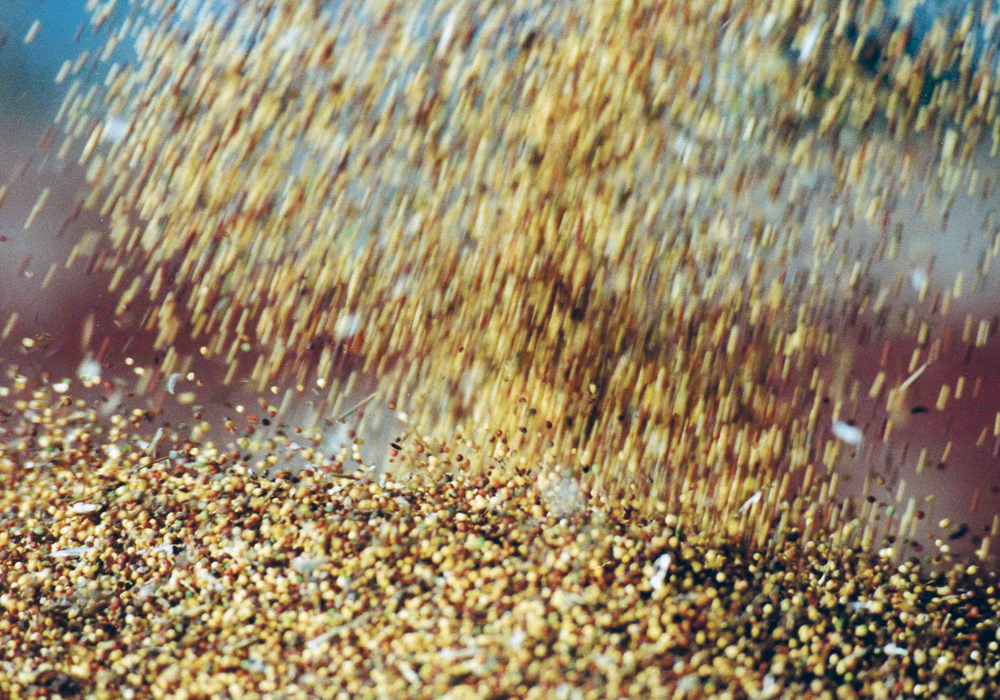Normally a hopeful time of year, this spring seeding season is full of worry because insufficient rain has fallen in much of the Canadian Prairies and markets remain roiled by trade issues with China.
The trade picture became more crazy last week with the United States-China trade talks faltering and the U.S. imposing new tariffs on China, triggering threats of counter tariffs from China. Then U.S. President Donald Trump pledged to buy surplus U.S. crops to give to poor countries as humanitarian aid.
Things appear to be getting worse rather than better, but even in the unlikely event that Canada and the U.S. can amicably settle their various issues with China, will the Asian giant need to resume huge imports of oilseeds from North America?
Read Also

Critical growing season is ahead for soybeans
What the weather turns out to be in the United States is going to have a significant impact on Canadian producers’ prices
The U.S. agricultural attaché in Beijing last week issued a sobering analysis and forecast for China’s demand for oilseeds and their products in light of the apparently severe impact of African swine fever that could see China’s herd shrink by 30 percent.
The attaché sees China’s total imports of soybeans in the current year at 84 million tonnes, down from 94.1 million last year. It forecasts imports in the coming crop year at only 83 million tonnes. That is less than the official USDA forecast of 87 million.
Before the latest breakdown in trade talks, China had agreed to import a fair number of U.S. beans in the final months of the crop year but so far it is falling short on the pace needed to meet the commitment.
But even with the slower imports it still has a surplus of soy meal because of the reduced demand from the hog sector.
The USDA attaché noted that current soybean spot prices in China are about 20 percent less than last year at this time and down about 13 percent from two years ago.
This has implications for canola meal. The report said that while soy meal prices have fallen, canola meal has been fairly steady and so the price premium of soy meal over canola meal has fallen to about $54 per tonne, compared to $120 at the end of 2018. In response, feed mills are reportedly partially replacing canola meal with soy meal.
So this makes it easier for Beijing to put the squeeze on canola to pressure Ottawa to release Huawei executive Meng Wanzhou, held in this country on an extradition request from the United States.
We can put some new numbers on how China is restricting Canadian canola imports. Statistics Canada says Canada exported 189,650 tonnes to China in March, down from 407,770 tonnes in the same month last year.
In the first three months of the calendar year, canola exports to China stood at 630,069 tonnes, down from 1.062 million tonnes in the same period last year.
Exports will likely be even worse in the final months of the crop year.
And China might continue to punish Canada into the next crop year. Meng appeared in a Vancouver court room last week and her lawyers said they would apply for additional disclosure from the prosecutors for the case, including information related to her arrest at Vancouver airport.
The disclosure application was set for Sept. 23-Oct. 4 in B.C. Supreme Court, so things plod along there.
But before we get too gloomy, it is worth noting that China will likely import canola in the coming crop year. The USDA attaché forecast China canola imports in 2019-20 at 4.1 million tonnes, up from an estimated four million in the current crop year but down from 4.7 million in 2017-18. It also expects canola oil imports might increase a little because although the smaller livestock herd doesn’t need meal, the human vegetable oil market is growing.
If its dispute with Canada continues, China could try to import more canola from Australia, Europe, the U.S., India and Ukraine, but I think that together they do not have enough to fully replace Canada’s exports. Indeed the European Union is officially forecast to harvest 19.2 million tonnes of canola, down from 19.6 million tonnes last year and 22.1 million two years ago. Private forecasters such as Oilworld think the crop could fall further to 18 million tonnes, a 13-year low. That would mean increased imports by that trade bloc.
Because drought severely cut production last year, Australia won’t have much canola to export until its new crop is harvested this fall. Prospects for the 2019 crop are mixed as many areas struggle to recover from the drought.
If competitors are able to ship more to China, Canada should be able to move in and fill markets that they are no longer filling. Growers should be aware that they need a certificate of sustainability to be able to export to the European Union.

















